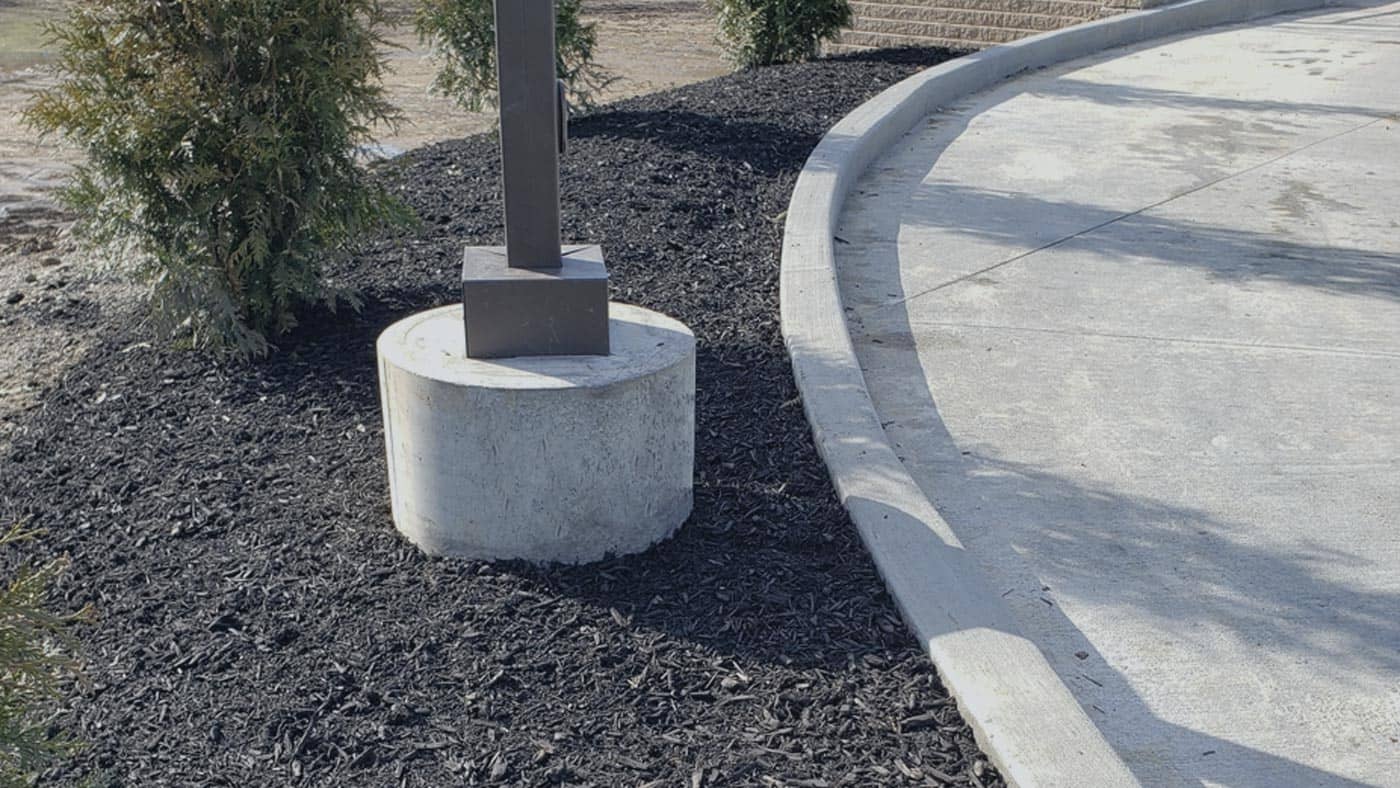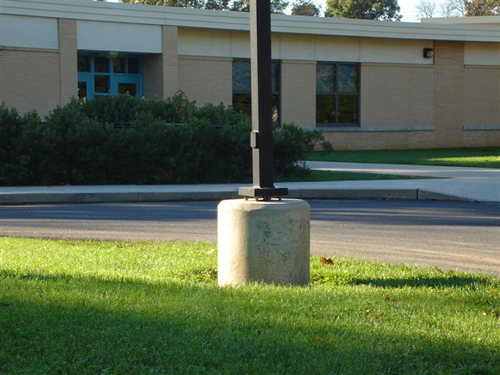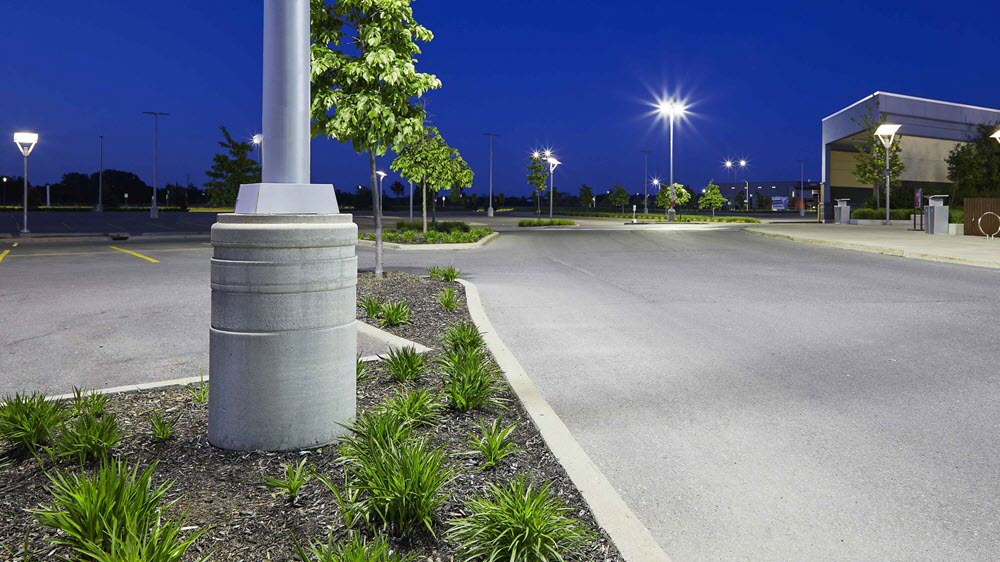Flood Light Base Servicesin Grosse Pointe Farms MI
Comprehensive Flood Light Installation for Enhanced Safety
We Are Locally Owned & Operated For Over 37 Years
Contact Us Today!
We Serve Businesses In And Around The Following Cities:
About Flood Light Base Services
Introduction
If you own a commercial property in Grosse Pointe Farms, Michigan, you certainly appreciate the importance of proper, high-quality lighting, not just inside your buildings but also in your outdoor spaces. Good outdoor lighting can make walking out of your building after dark safer and more comfortable for your employees and clients. One of the best ways of lighting up these spaces is by using flood light bases that support the lights to direct them where they’re needed. This detailed guide will give you an invaluable insight into the installation process, benefits, and real-world applications of flood light bases.
Why Flood Light Bases Are Important
Flood light bases support the floodlights and are integral in how these lights operate and their efficacy. The functionality of flood light bases comes from their versatility in placement, allowing them to be erected in a variety of locations—on walls, on the ground, and even on poles. Their tailored design provides reliable support to the flood lights in a way that optimizes their illumination while offering the required durability and stability, specifically in places like Grosse Pointe Farms where they need to withstand extreme weather fluctuations.
Process Of Installation
Installing flood light bases can be straightforward or complex, depending on the type of base, the floodlight’s weight, and where the base is intended to be mounted. The first step in the installation process typically involves establishing the location where the flood light base will be positioned. Ideal locations have to be stable and secure. The base is then secured, either dug into the ground, bolted onto a wall, or attached to a pole.
In situations where extensive wiring is required, or in case they are mounted high up on poles, you might need to work with a local contractor. In Grosse Pointe Farms, D&J Contracting is a reliable provider of these services. Their experienced team ensures a safe installation to minimize possible accidents, maintaining both the aesthetic appeal and structural integrity of your commercial property.
Benefits of Flood Light Bases
Flood light bases present numerous benefits. One of the key advantages is the improved outdoor visibility they offer. This level of visibility can prevent accidents, deter intruders, and provide a sense of security for those accessing your commercial property after dark.
In addition to their functional benefits, these bases can also enhance the aesthetics of your building. Design options for bases have expanded beyond merely practical applications to include a range of stylish, modern alternatives that can complement your property’s architecture. A local company like D&J Contracting often offers bespoke solutions tailored to meet your specific design aspirations.
Real-World Applications
The real-world application of flood light bases extends to a variety of sectors in Grosse Pointe Farms. They are common in car parks of commercial complexes and business centers, where they provide excellent visibility for people accessing their vehicles. Educational institutions also use flood light bases to illuminate their outdoor areas such as sports fields, pathways, and entrances.
Another interesting case is the Lake Shore Road, where local businesses leveraged flood light bases to bring enhanced visibility along this principal thoroughfare. By using these bases in the lighting installation process, businesses could create a safe and inviting atmosphere for patrons and passersby.
Considering the Best Option
When considering flood light bases for outdoor lighting in your commercial property, take into considerations factors such as longevity, structural integrity, aesthetic appeal, and overall cost-effectiveness. The process can be overwhelming, particularly for large-scale implementation, hence the need to engage skilled professionals. D&J Contracting in Grosse Pointe Farms are experts in this field, providing excellent support and guidance from planning and selection, through the installation process and beyond.
Reflecting On Key Points
Choosing a flood light base for your commercial property can seem daunting. From understanding the installation process, examining the aesthetic and practical benefits, and recognizing real-world applications, many variables require consideration. Assuredly, engaging professional help from renowned local contractors like D&J Contracting can smoothen this process and ensure successful implementation.
The primary function of your flood light bases and their effect in improving outdoor visibility should guide your decision-making process. The design should reflect your stylistic preferences and complement your property’s architecture. In essence, prioritize functionality and consider aesthetics in balance for a lighting solution that offers both safety and appeal. The significance of flood light bases in commercial properties is unquestionable and implementing them enhances not just visibility, but also contributes to the overall feeling of safety and aesthetics.
Flood Light Base Services Gallery


Call Us Today to receive your Free Quote for
Flood Light Bases in Grosse Pointe Farms
Serving: Grosse Pointe Farms, Michigan

About Grosse Pointe Farms, Michigan
The area that would become Grosse Pointe Farms was originally incorporated as the Village of Grosse Pointe in 1879. By 1889, the village extended from land just above Provencal Road in the northeast to Cadieux Road in the west. In 1893, the portion of the village east of Fisher Road broke off and incorporated as the Village of Grosse Pointe Farms after a dispute over the location of a tavern. It was not until 1949, however, that the village incorporated as a city.
The U.S. Postal Service operates the Grosse Pointe Post office in Grosse Pointe Farms.
According to the United States Census Bureau, the city has a total area of 12.32 square miles (31.91 km), of which 2.75 square miles (7.12 km) is land and 9.57 square miles (24.79 km) is water. The water is part of Lake St. Clair.
The Farms has a more varied topography and streetscape than the other southern Grosse Pointes. While Grosse Pointe and Grosse Pointe Park are built on a standard street grid and are basically flat, Grosse Pointe Farms is partially built on the same grid flowing out of Detroit, but also features districts with irregular, curving street paths. A low but noticeable ridge runs through the center of the city. The Farms also contains the “point” in Grosse Pointe, where, just east of the Grosse Pointe War Memorial, there is a large bend in the lakeshore, such that those on the shoreline face east, instead of south, as they do when on the shoreline of neighboring Grosse Pointe, closer to the entrance of the Detroit River.
The cityscape varies widely, with large sections of old homes ranging from bungalows to mansions, and a few newer sections with ranch houses or luxury homes built on subdivided estates. The Farms has a downtown on Kercheval Avenue combining historic buildings with newer, neo-traditional storefronts.
| Census | Pop. | Note | %± |
|---|---|---|---|
| 1900 | 817 | — | |
| 1910 | 862 | 5.5% | |
| 1920 | 1,649 | 91.3% | |
| 1930 | 3,533 | 114.3% | |
| 1940 | 7,217 | 104.3% | |
| 1950 | 9,410 | 30.4% | |
| 1960 | 12,172 | 29.4% | |
| 1970 | 11,701 | −3.9% | |
| 1980 | 10,551 | −9.8% | |
| 1990 | 10,092 | −4.4% | |
| 2000 | 9,764 | −3.3% | |
| 2010 | 9,479 | −2.9% | |
| 2020 | 10,148 | 7.1% | |
| U.S. Decennial Census | |||
As of the census of 2010, there were 9,479 people, 3,718 households, and 2,770 families residing in the city. The population density was 3,446.9 inhabitants per square mile (1,330.9/km). There were 3,952 housing units at an average density of 1,437.1 per square mile (554.9/km). The racial makeup of the city was 95.4% White, 1.8% African American, 0.2% Native American, 1.3% Asian, 0.4% from other races, and 1.0% from two or more races. Hispanic or Latino of any race were 2.0% of the population.
There were 3,718 households, of which 33.7% had children under the age of 18 living with them, 66.0% were married couples living together, 6.2% had a female householder with no husband present, 2.3% had a male householder with no wife present, and 25.5% were non-families. 23.0% of all households were made up of individuals, and 12.3% had someone living alone who was 65 years of age or older. The average household size was 2.55 and the average family size was 3.02.
The median age in the city was 45.1 years. 25.8% of residents were under the age of 18; 4.8% were between the ages of 18 and 24; 19.5% were from 25 to 44; 32.6% were from 45 to 64; and 17.5% were 65 years of age or older. The gender makeup of the city was 48.8% male and 51.2% female.
At the 2000 census, there were 9,764 people, 3,804 households, and 2,868 families residing in the city. The population density was 3,618.8 inhabitants per square mile (1,397.2/km). There were 3,937 housing units at an average density of 1,459.2 per square mile (563.4/km). The racial makeup of the city was 97.58% White, 0.65% African American, 0.11% Native American, 1.13% Asian, 0.11% from other races, and 0.42% from two or more races. Hispanic or Latino of any race were 1.11% of the population.
There were 3,804 households, of which 34.3% had children under the age of 18 living with them, 67.8% were married couples living together, 6.1% had a female householder with no husband present, and 24.6% were non-families. 22.3% of all households were made up of individuals, and 12.0% had someone living alone who was 65 years of age or older. The average household size was 2.57 and the average family size was 3.03.
Age distribution was 26.5% under the age of 18, 3.6% from 18 to 24, 23.4% from 25 to 44, 28.6% from 45 to 64, and 17.9% who were 65 years of age or older. The median age was 43 years. For every 100 females, there were 90.6 males. For every 100 females age 18 and over, there were 87.5 males.
The median household income was $100,153, and the median family income was $109,264. Males had a median income of $87,108 versus $53,241 for females. The per capita income for the city was $54,846. About 1.5% of families and 2.1% of the population were below the poverty line, including 3.1% of those under age 18 and 1.4% of those age 65 or over.
The community is served by Grosse Pointe Public Schools (GPPSS). Public schools within Grosse Pointe Farms include Père Gabriel Richard Elementary School, Kerby Elementary School, Brownell Middle School, and Grosse Pointe South High School. Along with Richard and Kerby, Monteith Elementary School in Grosse Pointe Woods serves a section of the city. All residents are zoned to Brownell. Almost all residents are zoned to GPS High, while those in a northwest section are zoned to Grosse Pointe North High School in Grosse Pointe Woods.
Saint Paul Catholic School is in Grosse Pointe Farms.
The Grosse Pointe Public Library operates the Central Branch in Grosse Pointe Farms.
Call Us Today to receive your Free Quote for
Flood Light Bases in Grosse Pointe Farms
Related Services in Grosse Pointe Farms, Michigan
We Serve Businesses In The Following Zip Codes:
48007, 48015, 48021, 48026, 48035, 48036, 48038, 48042, 48043, 48044, 48045, 48046, 48047, 48048, 48050, 48051, 48066, 48071, 48080, 48081, 48082, 48083, 48084, 48085, 48088, 48089, 48090, 48091, 48092, 48093, 48098, 48099, 48225, 48230, 48236, 48310, 48311, 48312, 48313, 48314, 48315, 48316, 48317, 48318, 48397